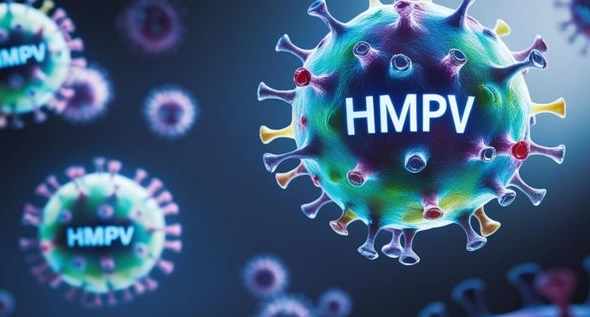The current spotlight on the human metapneumovirus (HMPV) — discovered for the first time in 2001 — a longstanding respiratory virus — that predominantly causes a mild upper-respiratory tract infection in children, the elderly, and the immunocompromised — finds its way into the limelight in a post-pandemic world, casting doubts over a possible large-scale outbreak.
As per experts, HMPV is a seasonal occurrence (peaks between January and March) that is typically self-limiting, or treated with over-the-counter medications for a majority of the susceptible population. As per a report, the current upsurge in respiratory illnesses in China is typical of the current flu season and includes not only HMPV but also RSV, influenza A, COVID-19, measles, and mumps.
The Indian Council of Medical Research (ICMR) has reported seven cases of HMPV in the country so far, all affecting children. According to the Ministry of Health and Family Welfare (MoHFW), the diagnoses were made as a part of the country’s ongoing surveillance of respiratory illnesses. The affected individuals have no history of international travel and thus acquired HMPV through transmission within the country.
The focus of this article is to highlight some key facts about human metapneumovirus (HMPV). To begin with, HMPV is a contagious common respiratory virus that causes an upper respiratory infection (like a cold) and lower respiratory disease in patients of almost all ages. However, it is most common in young children (age 5 or younger) and the elderly in whom it is more likely to develop into bronchiolitis, bronchitis or pneumonia.
Although a history of asthma, COPD, emphysema or any other lung disease does not make someone more likely to contract the illness, however presence of these lung diseases can make symptoms more severe. This is also true for people with weakened immune systems, including patients undergoing chemotherapy or post organ transplant.
HMPV most commonly spreads from person to person through close contact with someone who is infected through secretions from coughing and sneezing or touching contaminated surfaces or objects that have the virus on them. It is a seasonal disease that usually occurs in the winter and early spring, similar to RSV and the flu.
Most patients with HMPV have mild upper respiratory symptoms similar to a common cold that last roughly 2-5 days and go away on their own. The symptoms may include cough; runny nose or nasal congestion; sorethroat and fever. However, in more severe cases, patients may experience wheezing, difficulty breathing, severe cough and asthma flare-ups — that need medical attention. And secondary lower respiratory infections may occursuch as bronchiolitis, bronchitis or pneumonia — that also need medical attention.
Human metapneumovirus and COVID-19 are both contagious respiratory illnesses with similar symptoms – a runny nose, coughing, a fever, congestion, a sore throat, and shortness of breath. They spread in similar ways too. In their most serious forms, both can lead to hospitalization. But unlike COVID-19, there isn’t antiviral therapy or a vaccine to treat HMPV. HMPV is a seasonal virus, typically appearing in winter and spring, as opposed to COVID-19, which can sometimes circulate year-round due to the development of new variants.
The diagnosis of a HMPV is made by complete physical exam and patient history including ordering a swab test and some lab tests to confirm the type of virus causing the illness. Moreover, in very few severe hospitalized cases, doctors may advise a bronchoscopy test — where a small, flexible camera is inserted into the lung and a sample of fluid is removed to test for viruses.
While HMPV commonly clears up on its own, treatment is mostly supportive and directed towards easing symptoms. Generally, this means using over-the-counter medications to control pain and fever, along with some decongestant. Patients with more severe wheezing and coughing may require further treatment with an inhaler, which may include an inhaled corticosteroid or an oral medication. Some of the severe cases may require hospitalization.
While HMPV mostly spreads through contact with contaminated people or surfaces, the best way to protect from infection is to avoid touching people who are infected and washing one’s hands often with soap and water or applying a sanitizer frequently. If one thinks he is infected, he should keep others safe by covering their mouth during coughing or sneezing.
Moreover, people with chronic lung diseases such as COPD, asthma and pulmonary fibrosis should always take extra precautions to protect from infections such as HMPV, influenza and other contagious viral diseases. Additionally, they should make sure all vaccinations are up-to-date.
(Author is a medical doctor. Member of American Society of Clinical Oncology (ASCO) and has Specialization in Cancer Biology from Johns Hopkins University (USA) and health columnist. Feedback: [email protected])








